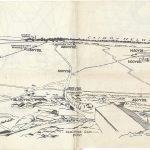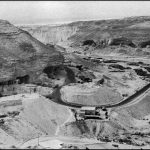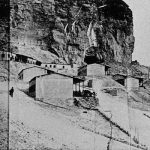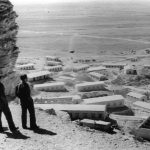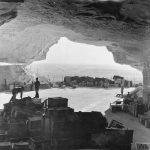ṬURA (TRŌĒ)
| Egyptian | Tȝ-rȝw | Tȝ-rȝy | Twr | Try |
| Greek | Τρώη |
| Arabic | طرة |
| English | Troe | Troia | Tura | Turah |
| French | Toura | Tourah | Tura |
| DEChriM ID | 71 |
| Trismegistos GeoID | 2480 |
| Pleiades ID | 727252 | PAThs ID | - |
| Ancient name | Trōē |
| Modern name | Ṭura |
| Latitude | 29.948010 |
| Longitude | 31.303399 |
| Date from | - |
| Date to | - |
| Typology | Quarry |
| Dating criteria | - |
| Description | The site of Ṭura, ancient Trōē, is a situated 10km outside of Cairo, in a south-easterly direction. Since at least the Old Kingdom, the site functioned as a limestone quarry, and indeed, it retains that function to this day. Noted for its quality, it was with limestone from Trōē that many of the most important monuments were faced, including the Great Pyramid of Khufu. In the beginning of August 1941, the British military in Egypt decided to use several of the quarries fin the war effort, including for the storing of munitions. To facilitate this, a team of workers was sent to the site to make the necessary preparations by removing the large amount of debris that had piled up within the quarries over the centuries. In the course of work in quarry no. 35, a considerable collection of Greek papyri was retrieved and purportedly stolen by the workmen. For a discussion of the series of events that followed, see Gueraud 1946: 85-89. These papyri contained works of Origen and Didymus the Blind, spanning from the fifth through to the seventh centuries. The two pieces relevant for fourth century Christianity were reused in the bindings of some of these codices, rather than belonging to the codices themselves (see: objects). There were apparently no indications that the quarry had ever functioned as a hermitage, though it is noted that such traces could have been removed in the course of cleaning. The favoured explanation, rather, was that a nearby monastery had perhaps hidden the works in the wake of the Arab conquest, though there were apparently no indications of the papyri having been concealed (Gueraud 1946: 86). |
| Archaeological research | No archaeological work has been conducted at the site. The relevant objects were found during the course of cleaning conducted in preparation for the use of several quarries in the area by the British military during WWII for the storing of munitions, and then the reparation of RAF aircraft engines (Gueraud 1946: 85). |
• Doutreleau, L. 1955. “Que Savons-nous aujourd'hui des papyrus de Toura.” Recherches des Sciences Religieuses 43: 161-193.
• Koenen, L. and L. Doutreleau. 1967. “Inventaires des papyrus de Toura.” Recherches de science religieuse 55, 4: 547-564.
• Puech, H. C. 1951. “Les nouveaux écrits d'Origine et de Didyme découverts à Toura.” Revue d'Histoire et de philosophie religieuses 31: 293-329.
• Gueraud, O. 1946. “Note préliminaire sur les papyrus d'Origène découverts à Toura.” Revue d'Histoire des Religions 131: 85-108.


 Json data
Json data
